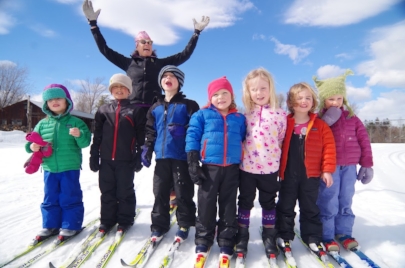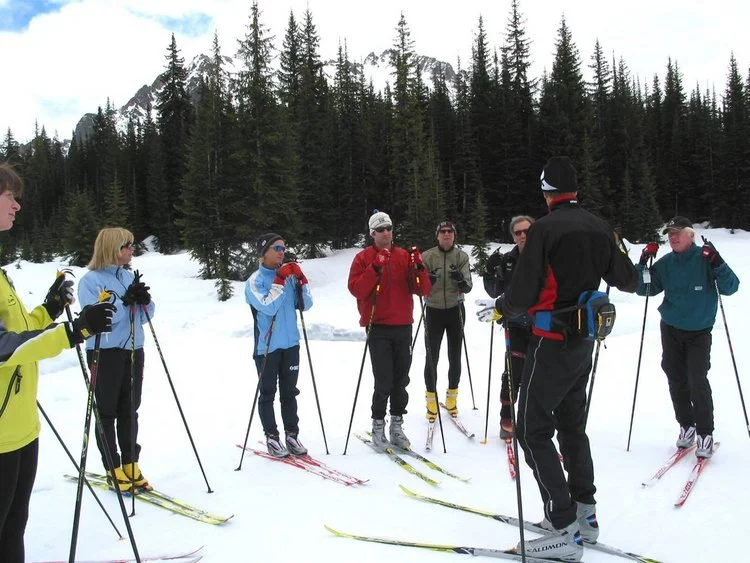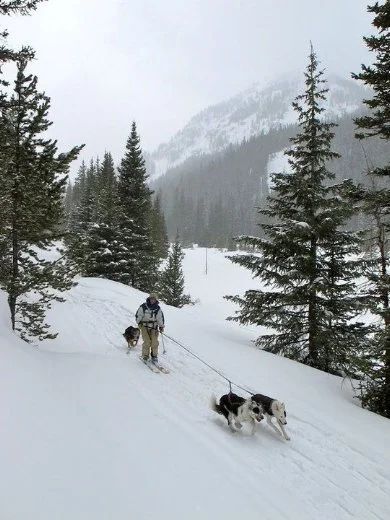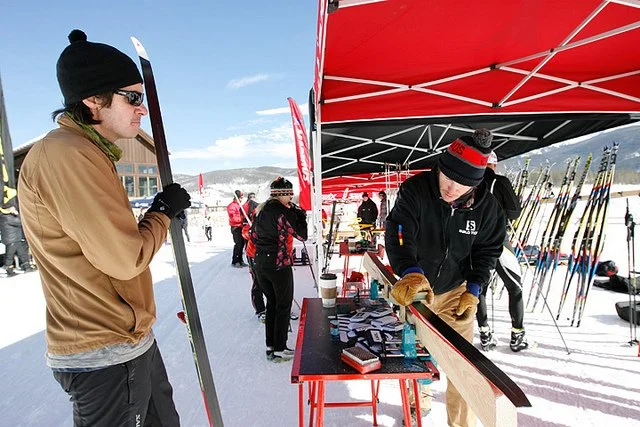Rail Trail North Pathway in WY by Tim Young
In Lebanon, NH our greatest resources include the Northern Rail Trail and the Mascoma River Greenway, trails that were created on an old railroad line in the region. These multi-use corridors create powerful opportunities for active transportation and physical activity—improving our health and well-being and safely connect people of all ages and abilities to jobs, schools, businesses, parks and cultural institutions.
Older trail enthusiasts and potential trail users can thrive on the rail trails because they have been built with a minimum of grade for the railroads. In short, this means that these trails do not have significant uphill or downhill aspects so they are easier and safer to enjoy for recreational trail uses such as cycling, walking, running, hiking, horseback riding, dog sled training, cross country skiing, snowshoeing, snowmobiling, bird watching, and to gain access to fishing areas.
Rails-to-Trails Conservancy
The Rails-to-Trails Conservancy (RTC) is a nonprofit organization dedicated to creating a nationwide network of trails from former rail lines and connecting corridors to build healthier places for healthier people. Thirty years ago, a group of walking and biking enthusiasts, railroad history buffs, conservation and parks groups, and active-transportation activists began meeting regularly in Washington, D.C., to mobilize efforts to preserve unused rail corridors for public use. The group quickly realized the need for a dedicated organization, and on Feb. 1, 1986, Rails-to-Trails Conservancy opened its doors.
RTC serves as the national voice for more than 160,000 members and supporters, 31,000 miles of rail-trails and multi-use trails, and more than 8,000 miles of potential trails waiting to be built, with a goal of creating more walkable, bikeable communities in America. The national RTC office is located in Washington, D.C., with regional offices in California, Florida, Ohio and Pennsylvania.
RTC has supported the development of thousands of miles of rail-trails and multi-use trails for millions of people to explore and enjoy. The work combines national policy advocacy and research expertise with on-the-ground trail development. RTC advocates for trail-friendly policies and funding at the federal and state levels—in the courts, in Congress and throughout the country. This trail development work has helped hundreds of communities in America plan, build and maintain trails in urban, suburban and rural areas.
Elizabeth River Rail Trail by KR Murphy
Since 1986, they’ve worked from coast to coast, supporting the development of thousands of miles of rail-trails for millions to explore and enjoy helping to craft rural trails that spool out over a hundred miles of open prairie, snake through mountain passes, span canyons and hug riverbanks, offering views of the countryside often unknown to the highway traveler. These trails are part of the connections between towns and suburbs, linking communities along vibrant corridors in much the same way as the railroads did in their heyday.
RTC’s mission, and its value, is magnified in urban areas, where one mile of trail can completely redefine the livability of a community. Where trails are more than just recreational amenities, creating opportunities for active transportation and physical activity—improving our health and wellbeing—as they safely connect us to jobs, schools, businesses, parks and cultural institutions in our own neighborhoods and beyond. And, through the promotion of rails-with-trails—trails alongside active rail lines—they are now unlocking the true potential of transportation systems that reflect how people really get around in the 21st century.
Northern Rail Trail
XCSkiResorts.com Editor rides the Northern Rail Trail
In my hometown, the trails are used by people of all ages, from toddlers to senior citizens, for cycling, walking, running, hiking, horseback riding, dog sled training, cross country skiing, snowmobiling, bird watching, to gain access to fishing areas, and even by handicapped people with walkers and in wheel chairs! This use includes residents of the contiguous towns as well as many surrounding areas, and from Vermont and Massachusetts and other New England areas.
The Friends of the Northern Rail Trail in Grafton County (FNRT) is a non-profit organization, founded in 1996, dedicated to the conversion of the Northern Rail Corridor into a multi-use recreational trail. The Friends have built an organization of approximately 130 paid members from all over New England, with the majority from the Upper Valley, and a twelve member volunteer Board of Directors who come from many Upper Valley towns and represent a variety of interests including cyclists, runners, snowmobilers, hikers, and cross country skiers. The Friends also have a strong base of volunteers who attend workdays and activities.
In support of the trail development in Lebanon, Enfield, Canaan, Orange, and Grafton, the FNRT has sponsored its own workdays and held clean-up days. This work has included removing ties and metal, decking bridges, bridge demolition and reconstruction, clearing brush, ditching, signage installation, landscaping and mowing, litter clean-up and surface improvement work.
The FNRT has promoted the trail through a newsletter and local newspapers, as well as at events sponsored by Riverfest, the Upper Valley Trails Alliance, and Eastern Mountain Sports. The Friends have written and received numerous grants and maintain a web site (www.northernrailtrail.org), which has allowed new users to get information about the trail including surface conditions, access points, and nearby facilities.
A series of color maps and informational displays of historic interest, produced by volunteers have been posted at various points along the trail. A number of small parks have been developed through the efforts of the organization and other volunteer groups in Lebanon and Canaan. Finally, benches have been placed at scenic intervals along the trail, which people find comforting for rest breaks.








































